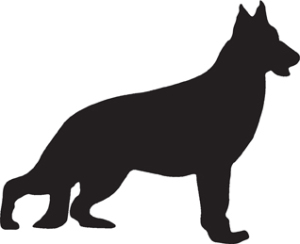The Importance of a Release Command
WHAT AND WHY???
Simply stated, a release command is a command of your choosing that you teach your dog to let him know that the exercise he is performing is finished. Think of it like work: you are the boss and your dog is to work until you say the work time is over. It’s all about leadership – you give the command and your dog is expected to execute that command until you “release” him from the exercise.
Real case scenario: imagine you are in the kitchen and you drop and break a glass on the floor. Your dog comes running in to see what’s going on. You’ve done some training so you quickly say “Sit. Stay”. Your dog gets into a sit/stay position. Then, imagine your dog gets up when he feels like and walks through the broken glass? For your dog’s safety, he MUST learn to execute the command until released!
Praise (“Good dog.” meaning “You’re doing a great job, keep it up!”) and reward (a small treat) must be given WHILE your dog is performing the exercise. Many owners want to lavish petting on their dogs during training. Caution: petting may be too stimulating for some dogs, causing them to become distracted and wiggle out of position. I recommend to either eliminate or dramatically reduce petting during training. Instead, rely on verbal praise.
I cannot express how important a release command is especially if you like to train using TREATS. Treats can be an excellent tool used to teach your dog new commands or tricks. But if your dog takes the treat and then gets up automatically you will forever have a dog that ONLY works for food. This is a HUGE mistake that so many make. Eventually, wean your dog off of the treats and teach a release command. YOU must say when the job is finished and your dog can take a break.
Some examples of release commands are “OK!”, “Free!”, “Break!”, but you should teach your dog a release command that you like that only has one meaning: that the exercise is finished. I try to teach my clients to look away for 3-5 seconds after releasing their dogs from exercises. This accomplishes a couple of things:
1) there is no further attention given to your dog immediately after the release command has been given. Why? If you release your dog and he gets up and then you pet and praise your dog, you are putting all of the attention on his getting up. Basically, you are rewarding your dog for getting up and not for performing the exercise! Make the most of your training time by giving attention during the exercise NOT after! Remember, dogs are creatures of the moment – they associate praise (and correction) with what they are doing at that immediate time.
2) when you look away after releasing your dog it leaves them wanting more training from you. This is a great way to keep your dog’s attention and keep him in “work -mode”. The more your dog is in “work-mode” the more interested he will stay in training, which means you will get more accomplished!
So, to sum up the order of things during a training exercise, it’s PRAISE, REWARD, and RELEASE. Make sure your release command is loud and clear, and don’t feel the need to repeat it. Sometimes your dog has heard the release command and is relaxed enough to stay in that position anyway. That’s perfectly acceptable as long as You have released HIM!
Make the most of your training and have FUN! Remember, it’s not over until YOU say it’s over!
Stacie and Ronan









Leave a Reply
Want to join the discussion?Feel free to contribute!